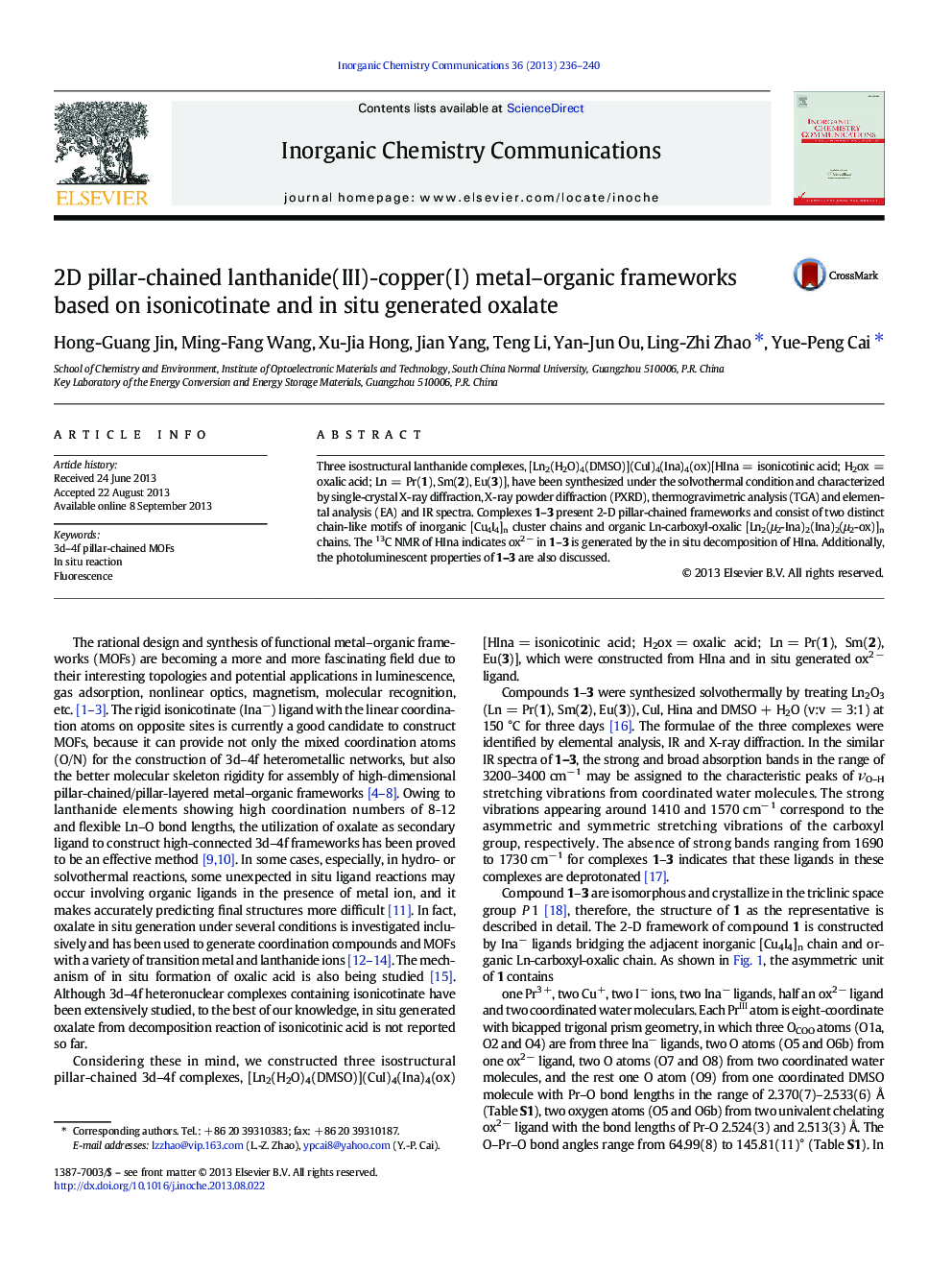| کد مقاله | کد نشریه | سال انتشار | مقاله انگلیسی | نسخه تمام متن |
|---|---|---|---|---|
| 1301947 | 1498954 | 2013 | 5 صفحه PDF | دانلود رایگان |

• Three isostructural 2D pillar-chained frameworks were synthesized and characterized.
• Two chains are [Cu4I4]n and [Ln2(μ2-Ina)2(Ina)2(μ2-ox)]n motifs, respectively.
• The pillar is ox− ions generated by the in situ decomposition of HIna.
Three isostructural lanthanide complexes, [Ln2(H2O)4(DMSO)](CuI)4(Ina)4(ox)[HIna = isonicotinic acid; H2ox = oxalic acid; Ln = Pr(1), Sm(2), Eu(3)], have been synthesized under the solvothermal condition and characterized by single-crystal X-ray diffraction, X-ray powder diffraction (PXRD), thermogravimetric analysis (TGA) and elemental analysis (EA) and IR spectra. Complexes 1–3 present 2-D pillar-chained frameworks and consist of two distinct chain-like motifs of inorganic [Cu4I4]n cluster chains and organic Ln-carboxyl-oxalic [Ln2(μ2-Ina)2(Ina)2(μ2-ox)]n chains. The 13C NMR of HIna indicates ox2 − in 1–3 is generated by the in situ decomposition of HIna. Additionally, the photoluminescent properties of 1–3 are also discussed.
Three isostructural 2-D 3d–4f compounds have been successfully synthesized based on isonicotinate and in situ generated oxalate. The structures contain inorganic I–Cu clusters and organic Ln-carboxyl-oxalic chains bridged by isonicotinate linkers.Figure optionsDownload as PowerPoint slide
Journal: Inorganic Chemistry Communications - Volume 36, October 2013, Pages 236–240